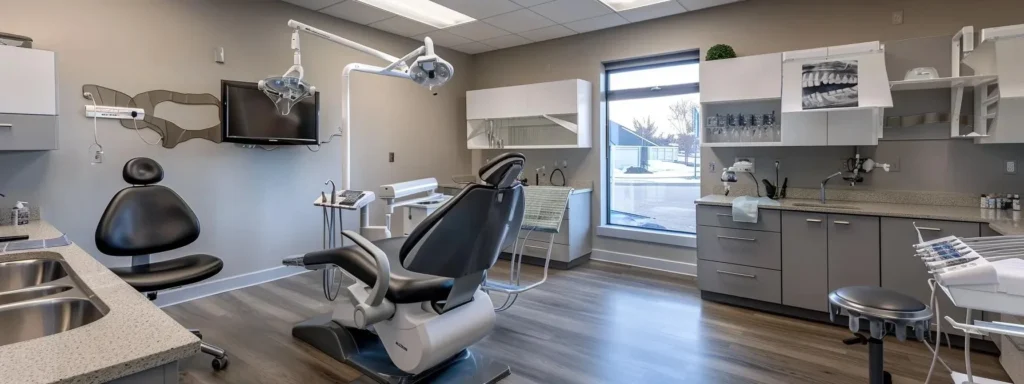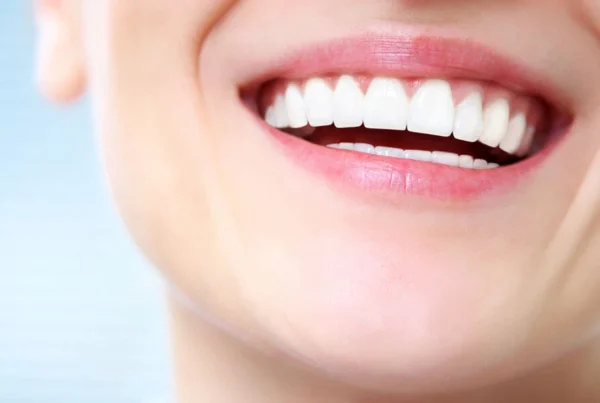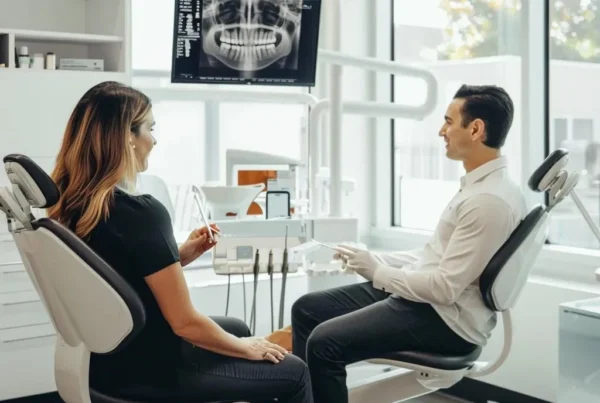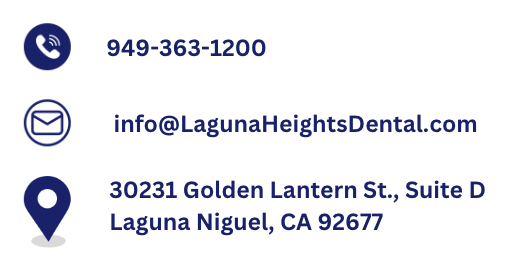Look, nobody wants to deal with a loose dental crown. But here’s the thing: when it happens, how you respond in those first few moments can make all the difference. You’re not dealing with just a minor inconvenience here. This is about protecting your oral health and avoiding way bigger problems down the road.
The good news is that handling a loose crown doesn’t have to be complicated. There are some straightforward steps you can take right away to manage the situation effectively. Think of this as your game plan for when dental surprises pop up.
What really matters is recognizing what’s happening and knowing exactly what to do next. You don’t need to panic, but you definitely shouldn’t ignore it either. Let’s walk through everything you need to know to handle this like a pro.
Spotting the Signs Your Crown Is Coming Loose
Honestly, your mouth is pretty good at telling you when something’s not right. You might notice your crown feels different when you run your tongue over it. Maybe it moves slightly or just doesn’t feel as secure as it used to. These little changes are your first warning signs.
Sometimes the crown will actually shift when you bite down on food. You know that feeling when something just doesn’t align quite right? That’s what we’re talking about. Your bite might feel off, or you might experience some sensitivity that wasn’t there before.
Here’s what really gets people’s attention: sudden pain while eating. If you’re chomping down on something and get hit with unexpected discomfort, that crown might be failing to do its job of protecting the tooth underneath.
The most obvious sign is when you can actually see the crown sitting differently. Maybe it looks like it’s pulling away from your gum line, or worse, you can see it’s actually coming off. When you notice visible changes like these, it’s time to take action immediately.
Your First Response at Home
When you realize your crown is loose, your first instinct might be to try fixing it yourself. Please don’t. I know it’s tempting, but hear me out on this one. The smartest thing you can do right now is switch to damage control mode until you can get professional help.
Start by changing what you eat. Stick to softer foods that won’t put extra pressure on that loose crown. Think yogurt, soup, pasta, things that don’t require a lot of heavy chewing. Skip anything hard, sticky, or chewy that could make the situation worse.
Whatever you do, resist the urge to use household glue or any DIY fixes. These aren’t just ineffective, they can actually cause serious problems. You could introduce harmful bacteria, trigger allergic reactions, or damage the tooth even more. If the crown comes out completely, just store it safely in a clean container.
The most important step is getting in touch with your dentist as soon as possible. They have the right tools and materials to handle this properly. While taking care of things at home is important, only a dental professional can give you a real solution that will last.
Getting to the Root of the Problem
You can’t really fix a loose crown without understanding why it happened in the first place. Think of it like trying to repair a leak without finding where the water is coming from. Your dentist needs to play detective here to figure out what went wrong.
A lot of times, the culprit is tooth decay underneath the crown. When decay sets in, it compromises how well the crown fits and stays attached. If there’s decay present, that has to be treated first before anything else can be done effectively.
Sometimes it’s simply that the dental cement holding everything together has broken down over time. This can happen naturally as materials age, or because of exposure to certain foods or substances. The fix might be as straightforward as cleaning everything up and applying fresh cement.
Other times, the crown itself has developed a crack or break. When that happens, the crown can’t do its job properly anymore and usually needs to be replaced entirely. Your dentist will need to examine the crown carefully to determine if it can be saved or if it’s time for a new one.
What Your Dentist Can Actually Do About It
When you get to the dental office, your dentist has three main options: recement the crown, repair it, or replace it completely. The choice depends on what they find when they examine both the crown and the tooth underneath. Each approach has its place depending on your specific situation.
Recementing is often the first thing they’ll try if both the crown and tooth are in good shape. They’ll clean everything thoroughly and attach the crown with fresh dental cement. It’s the least invasive option and can restore stability with minimal fuss.
If the crown has minor damage like small cracks or chips, repair might be possible. This preserves most of the original crown and is usually faster and less expensive than starting over. Whether this works depends on how extensive the damage is.
When the crown or the underlying tooth is seriously compromised, replacement becomes necessary. A new crown gets custom made to match your other teeth perfectly. This is the route when the old crown simply can’t provide the protection and appearance you need anymore.
Your dentist will walk you through which option makes the most sense for your situation. They’ll consider factors like the crown’s condition, your tooth’s health, and what will give you the best long term results.

Knowing When to Pick Up the Phone
Here’s the bottom line: if you’re experiencing pain or discomfort with your crown, that’s your cue to call the dentist. Pain usually means something more serious is happening, possibly involving the tooth or nerve underneath. Getting help quickly can make treatment much more straightforward.
Even if you’re not in pain, a crown that doesn’t fit right needs attention. A misaligned crown can throw off your bite and lead to other problems if you ignore it. It’s way better to address these issues while they’re still minor.
You might think you can wait it out if there’s no immediate discomfort, but that’s risky thinking. An exposed tooth without proper crown protection is vulnerable to damage and decay. The longer you wait, the more complex and expensive treatment can become.
Keeping Your Crowns in Great Shape Long Term
The best way to deal with loose crown problems is to prevent them from happening in the first place. This isn’t rocket science, but it does require some consistency on your part. A few smart habits can keep your crowns functioning well for many years.
Regular dental checkups are absolutely essential for crown maintenance. During these visits, your dentist can spot potential problems before they become emergencies. They’ll also provide professional cleanings that keep both your crowns and natural teeth healthy.
Your daily oral hygiene routine is just as important as those dental visits. Brushing and flossing remove the plaque and debris that can cause decay around crown edges. Good oral hygiene protects not just the crown, but also supports the health of your natural teeth.
Being mindful of what you put your crowns through makes a real difference too. Avoid grinding your teeth or chewing on hard objects like ice or pens. These habits put unnecessary stress on your crowns and can lead to damage over time.
When you commit to these preventive measures, you’re making a smart investment in your dental health. Your crowns will continue doing their job effectively, and you’ll keep your smile both healthy and attractive.
What Actually Happens During Your Dental Visit
Walking into the dental office with a loose crown might feel a bit nerve wracking, but knowing what to expect can help put you at ease. Your dentist will follow a systematic approach to diagnose the problem and get your crown back to working properly.
The first thing they’ll do is conduct a thorough examination of both the crown and the affected tooth. They’re looking for signs of damage, decay, or fit issues that could explain why the crown became loose. This visual inspection gives them important clues about what’s going on.
You’ll likely need some X-rays to get the complete picture. These images let your dentist see what’s happening beneath the surface, including the tooth roots, surrounding bone, and how well the crown interfaces with the tooth. This information is crucial for making the right treatment decisions.
Throughout your visit, your dentist will explain their findings and walk you through the recommended treatment plan. They want to make sure you understand what needs to be done and feel comfortable with the approach. The goal is always to restore your crown’s function with as little discomfort as possible.
Your dental team is focused not just on fixing the immediate problem, but on making sure your overall oral health stays on track. They’ll provide guidance to help prevent similar issues in the future and keep all your dental work performing well.
Making Smart Decisions About Your Dental Care
Dealing with a loose crown teaches you something important about dental health: small problems can become big ones if you don’t address them promptly. The key is recognizing the warning signs and knowing exactly what steps to take when they appear.
When you stay alert to changes in how your crown feels or functions, you give yourself the best chance of catching problems early. Early detection means simpler treatment, less discomfort, and better outcomes overall. It’s really that straightforward.
Building a relationship with a trusted dental practice makes all the difference when dental emergencies arise. You want a team that knows your dental history and can provide the specialized care your situation requires. This partnership approach leads to better treatment and peace of mind.
The bottom line is this: your oral health deserves the same attention you give to other aspects of your wellbeing. When you invest in proper care and maintenance, your dental work can serve you well for many years. Don’t let a loose crown turn into something bigger when prompt professional attention can resolve it effectively.
Schedule your consultation Today!
Laguna Heights Dental
30231 Golden Lantern, Ste D
Laguna Niguel, CA 92677
(949) 363-1200
https://lagunaheightsdental.com/
See More Reviews From Laguna Height Dental. View information about local places in our community. Get Driving Directions to Our Practice
Frequently Asked Questions
What should I do if my dental crown feels loose?
First, avoid putting pressure on the loose crown by eating soft foods and being gentle when brushing. Contact your dentist immediately to schedule an urgent appointment. Don’t try to fix it yourself with household glue or other DIY methods, as this can cause more damage and complications.
Can I fix a loose crown at home, or should I see a dentist?
You should definitely see a dentist rather than attempting home repairs. While you can take temporary measures like eating soft foods and storing the crown safely if it comes out, only a dental professional has the proper tools and materials to fix it correctly. Home remedies can introduce bacteria and cause further damage.
How can I prevent my dental crowns from becoming loose?
Maintain excellent oral hygiene with daily brushing and flossing, attend regular dental checkups for professional monitoring and cleaning, and avoid habits that stress your crowns like grinding teeth or chewing hard objects. Being proactive with preventive care significantly extends the life of your crowns and helps catch potential problems early.





